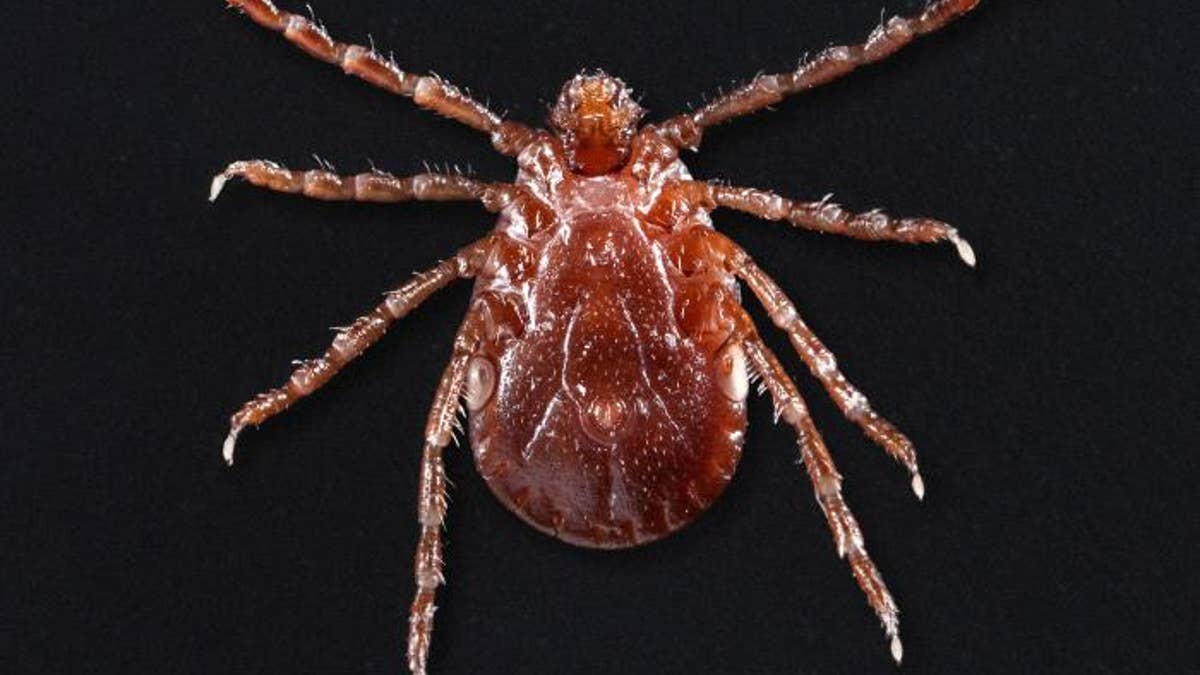
This photograph depicts a ventral view, i.e., underside, of an adult female Haemaphysalis longicornis tick, commonly known as the longhorned tick. (CDC/James Gathany)
A new invasive tick species described as an “aggressive biter” has been found in a number of U.S. states, sparking concern from agriculture and health officials.
The Haemaphysalis longicornis, better known as the longhorned tick, is native to the Asia-Pacific region. Predominant hosts include humans, poultry, livestock, wild rodents and birds, according to scientists.
The New York Times reports that the longhorned tick is the first new tick species to arrive in America in 50 years.
TENNESSEE WOMAN BITTEN BY BROWN RECLUSE SPIDER IN ALLEGED INFESTED APARTMENT TO MOVE
It was found for the first time in the U.S. late last year, when it was identified on a sheep in Hunterdon County, N.J.
“Recently, the tick has also been found in Union and Middlesex Counties in New Jersey, as well as from a calf in Albemarle County in Virginia and cattle in Hardy County in West Virginia,” explained the New Jersey Department of Agriculture, in a note.
Additionally, the tick has been identified in Warren County, Va., as well as in Arkansas and at multiple locations in Westchester County, N.Y., according to the National Veterinary Services Laboratory in Ames, Iowa. The longhorned tick has also been found on an opossum in Polk County, N.C.
“It is a serious pest of livestock in its native regions and the means of introduction into the U.S. is unknown,” explained the North Carolina Department of Agriculture and Consumer Services, in a recent statement.
“Its presence in N.C. signals the need among livestock producers and residents for greater awareness, surveillance, and tick control management. It is an aggressive biter and frequently builds intense infestations on animals causing great stress, reduced growth and production, and blood loss.”
TICKS HATE A PESTICIDE THAT MIMICS CHRYSANTHEMUMS
In addition to Eastern Asia, the tick is also a threat to livestock in Australia and New Zealand, where it is known as a “bush tick.”
“While the longhorned tick has not been linked to any human infection in the U.S., the N.C. Division of Public Health is working with NCDA&CS [North Carolina Department of Agriculture and Consumer Services] to understand its distribution and monitor for diseases it may carry,” officials added.
The New York State Departments of Health and Agriculture and Markets noted that the tick has transmitted disease to humans in other parts of the world, but said that more research is needed to determine whether this can happen in the U.S.
“Regardless, New Yorkers should continue to take steps to protect themselves, their children and their pets against ticks and tickborne diseases that are present in New York State,” it said.
LYME DISEASE SPREADS TO ALL 50 STATES, REPORT FINDS
Human diseases transmitted by the tick in Asia include spotted fever rickettsiosis, a bacterial infection that ranges from mild to life-threatening. The New York Times reports that the biggest threat from the longhorned tick is a phlebovirus that causes Severe Fever with Thrombocytopenia Syndrome (SFTS), an emerging infectious disease described as a “haemorrhagic fever.”
“The disease has become a substantial risk to public health, not only in China, but also in other parts of the world,” The Lancet reported in 2014.
The CDC provides advice on how best to remove a tick.
Follow James Rogers on Twitter @jamesjrogers




















